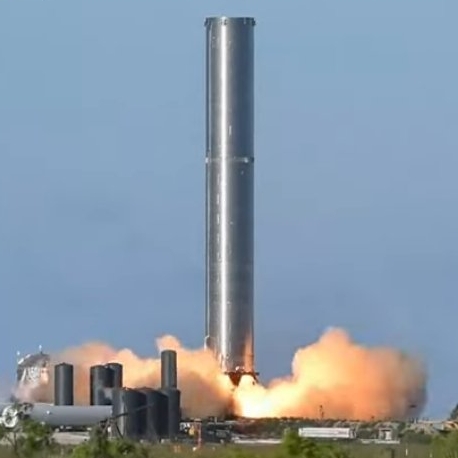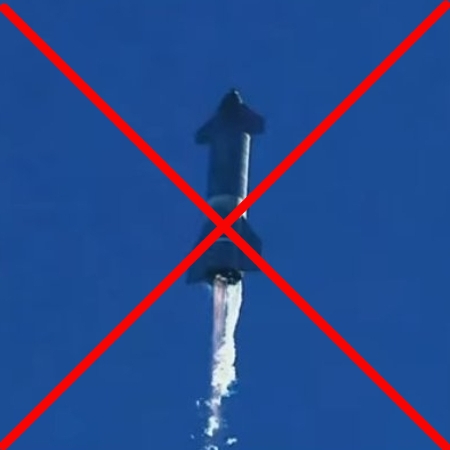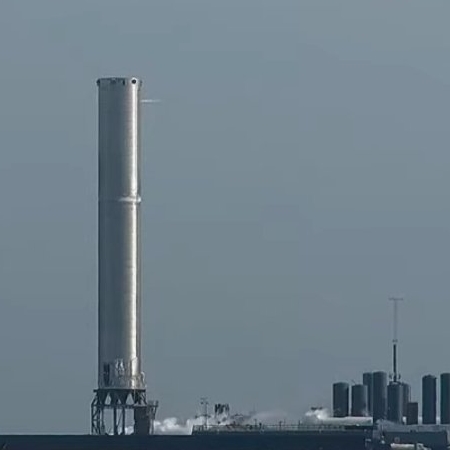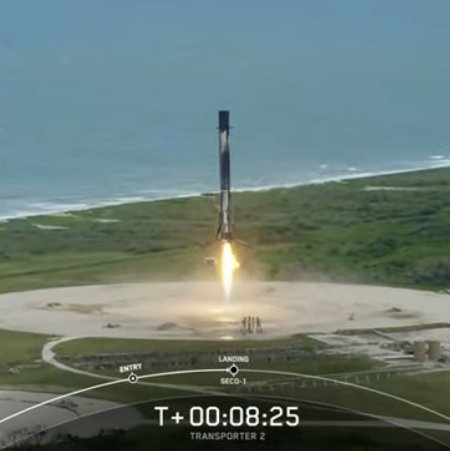SpaceX completes first static fire test of Superheavy prototype #3

Superheavy booster #3 fires.
Capitalism in space: SpaceX yesterday successfully completed the first static fire test of the third Superheavy prototype, firing up three Raptor engines for about two seconds.
I have embedded the live stream from NASASpaceflight.com below the fold, cued to just before the engines fire. Because there was a delay of a few minutes from when the static fire was expected and when it actually happened, the announcers had began talking and were caught off guard by the burn.
Next up:
Booster 3 provides a first-time operation for fueling the huge booster with Liquid Oxygen (LOX) and Liquid Methane (CH4) during the test. How much propellant will be loaded, and the schedule for the sequence was unknown. However, NSF’s Adrian Beil wrote a feature on the expectations based on previous experiences with Starship being applied to Super Heavy.
Based on those evaluations, it was expected that Super Heavy would also undergo a Starship-like countdown of 45-60 minutes, with fueling beginning in the 30-40 minute range. Engine chill would then follow at T-12 minutes, ahead of the firing. As with previous Static Fires, the T-10 minute siren sounded, as per the alert notice to local residents. However, as with Starship, mini-holds can be expected, pushing the ignition time to the right. This proved to be the case on Monday.
The booster fired up all three engines for the expected duration, confirmed by Musk before he noted that “depending on progress with Booster 4, we might try a 9 engine firing on Booster 3.”
Booster #4 will be put on the orbital launchpad rather than the test pad, and is likely the booster to be used for the first orbital test flight of Starship, likely to be launched before the end of summer.
» Read more

Superheavy booster #3 fires.
Capitalism in space: SpaceX yesterday successfully completed the first static fire test of the third Superheavy prototype, firing up three Raptor engines for about two seconds.
I have embedded the live stream from NASASpaceflight.com below the fold, cued to just before the engines fire. Because there was a delay of a few minutes from when the static fire was expected and when it actually happened, the announcers had began talking and were caught off guard by the burn.
Next up:
Booster 3 provides a first-time operation for fueling the huge booster with Liquid Oxygen (LOX) and Liquid Methane (CH4) during the test. How much propellant will be loaded, and the schedule for the sequence was unknown. However, NSF’s Adrian Beil wrote a feature on the expectations based on previous experiences with Starship being applied to Super Heavy.
Based on those evaluations, it was expected that Super Heavy would also undergo a Starship-like countdown of 45-60 minutes, with fueling beginning in the 30-40 minute range. Engine chill would then follow at T-12 minutes, ahead of the firing. As with previous Static Fires, the T-10 minute siren sounded, as per the alert notice to local residents. However, as with Starship, mini-holds can be expected, pushing the ignition time to the right. This proved to be the case on Monday.
The booster fired up all three engines for the expected duration, confirmed by Musk before he noted that “depending on progress with Booster 4, we might try a 9 engine firing on Booster 3.”
Booster #4 will be put on the orbital launchpad rather than the test pad, and is likely the booster to be used for the first orbital test flight of Starship, likely to be launched before the end of summer.
» Read more





